Manuel de Llanza y Pignatelli
Manuel de Llanza y de Pignatelli de Aragón, Hurtado de Mendoza y Esquivel, 9th Duke of Solferino, 11th Marquis of Coscojuela,[1] 13th Count of Centelles, grandee of Spain (1858–1927) was a Spanish Carlist politician. In the late 19th century he emerged as one of party leaders in Catalonia and was its regional jefe in two separate strings of 1910–1914 and 1917–1919. He is recognized as typical example of inner-circle aristocrat ruling the party during the Restoration period.
Manuel de Llanza y Pignatelli | |
|---|---|
 | |
| Born | Manuel de Llanza y Pignatelli 1858 |
| Died | 1927 Barcelona |
| Nationality | Spanish |
| Occupation | Landowner |
| Known for | politician |
| Political party | Carlism |
| Signature | |
Family and youth
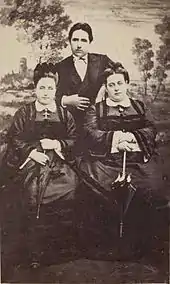
The Llanzas are one of the oldest families in Catalonia, recorded already in the 12th century.[2] In the early 17th century one of its branches settled at a large pairal estate[3] in Vilassar de Mar.[4] Its descendant and Manuel's paternal grandfather, Rafael de Llanza i de Valls (1772–1833),[5] made a very picturesque figure during the Napoleonic period. His military career[6] was extremely windy: first he fought against the French (in Catalonia), then as a French ally against the English (in Galicia and Portugal), the Austrians (in Italy) and the Prussians (in Pomerania and Denmark), was incarcerated for attempt to join national anti-French rising of 1808, as a volunteer reached Moscow and ended up in the army of Ferdinand VII.[7] His diary provides excellent first-hand insight into the plight of Spanish troops in Russia.[8]
Rafael's son and Manuel's father, Benito Llanza y de Esquivel (1822–1863),[9] initially also served in the army.[10] However, he became known as high official of Ministerio de Instrucción Pública in successive Narváez governments,[11] member of intellectual elite and engaged in disputes with the likes of Pablo Piferrer, Joan Mañé i Flaquer, Francesc Pi i Margall, Manuel Milà i Fontanals and Manuel Tamayo y Baus. Himself he tried his hand in letters[12] and was also co-founder of l’Acadèmia Provincial de Belles Arts de Barcelona.[13] In 1849 he married Maria de la Concepción Pignatelli de Aragón y Belloni (1824-1858),[14] duchess of Solferino and condesa de Centelles, descendant to a family originating from Italy[15] and heiress to enormous land fortune in Aragon. Politically close to the Moderados[16] he probably aspired to political career, thwarted by his premature death.[17]
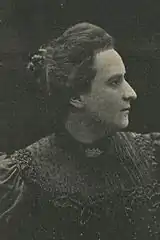
The couple had 5 children: Manuel was born as the younger one of two sons. Little is known about his childhood, except that he was very early orphaned by both parents; since his older brother died in infancy,[18] he inherited all aristocratic titles and the family fortune at the age of 10.[19] Together with sisters he was raised by paternal uncle, Rafael Llanza y Esquivel, who unlike his brother was a vehement Carlist.[20] The family left Spain following declaration of the Republic and returned in 1876;[21] Manuel enrolled in law at Universidad de Barcelona and graduated at unspecified time in the late 1870s.[22] In 1881 he married Maria Asunción de Bobadilla y Martínez de Arizala (1861-1898),[23] descendant to a wealthy Navarrese family; her father, Mauricio de Bobadilla y Escrivá de Romaní, was head of Navarrese Carlism[24] and served as deputy from Estella in Cortes Constituentes between 1869 and 1871.[25] The couple settled in Solferino's palace in Barcelona.[26] They had 7 children, born between 1884 and 1895.[27] The oldest son, Luis Gonzaga de Llanza y de Bobadilla, inherited the ducado and together with his brother Francisco became active in Catalan Carlism,[28] though none of them grew into prominence as a politician.[29]
Early political activity
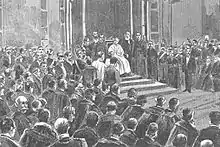
As a grandee of Spain Solferino was welcome in Carlism[30] and the party propaganda took advantage of his name as early as in 1872.[31] Initial Solferino's engagement in Carlism, politics and public life was very much formatted along the Integrist pattern. In the aftermath of military defeat, suffered in 1876, the party was dominated by Cándido Nocedal. The former neocatólico shaped Carlism as focused almost exclusively on religious threads and intended to maintain public mobilization by means of Catholic initiatives. Key element of this strategy were massive semi-political pilgrimages.[32] The first one took place in October 1876, with almost 6,000 pilgrims reaching Rome; Solferino was listed as one of the most prestigious participants.[33] Similarly, he took part in the next pilgrimage to Rome of 1878.[34] In 1881 his position changed from prestigious participant to one of the organizers, as he emerged as treasurer of Junta Organizativa de Barcelona of the next pilgrimage, planned for 1882[35] and finally called off due to political reasons.[36]
In the 1880s Solferino was extremely active in pilgrimage activities, many of them also marked with Nocedalista political undertones; as organizer he appeared hand-in-hand with iconic Integrist figures like Félix Sardá y Salvany.[37] Though re-launch of the aborted 1882 visit to Rome, attempted as late as 1885, did not work out, Solferino was arranging smaller-scale pilgrimages to Catalan sanctuaries like in 1886 to Montserrat[38] or to foreign ones like in 1887 to Lourdes;[39] in 1887 he was formally appointed member of the bishop commission, entrusted with co-ordination of pilgrimage activities.[40] Already in 1877 listed as member of Junta Directiva of the Barcelona branch of Juventud Católica,[41] in the mid-1880s he grew to Catalan presidency of the organization.[42] Hosting bishops in his private residence,[43] he donated money to Catholic initiatives.[44] Listed as active in clearly Carlist enterprises like erecting monument to Zumalacarregui (in 1883)[45] or commemorating fallen Carlists (in 1888)[46] he was acknowledged as organizer also by civil administration: in 1887 mayor of Barcelona appointed him to commission coordinating charity activities.[47]
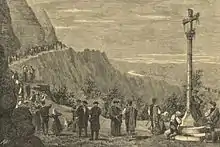
Solferino is not listed as key protagonist in an internal Carlist conflict, developing between Ramón Nocedal and the claimant Carlos VII. Hitherto pilgrimage activities seemed to format him as an Integrist supporter, especially that he kept addressing Nocedal[48] and Sardá[49] with venerating letters and in 1886 the press reported him as one of "jefes del integrismo catalan".[50] However, as one of two grands adhering to Carlism he was also celebrated - despite his young age - by the claimant, who already in 1885 invited Solferino to his Venice residence.[51] Though in early 1888 the Nocedalista daily El Siglo Futuro publicized Llanza's solidarity with Nocedal,[52] in the moment of choice he decided to stand by the claimant; in 1889 the same newspaper already ridiculed the duke.[53]
Deputy and senator
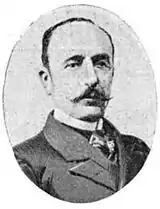
Following the Integrist secession the new Carlist political leader, marqués de Cerralbo, embarked on institutional build-up of the movement. The emergent nationwide structures were originally set up to celebrate the centenary of conversion of Recaredo, but they gave rise to firm party organization.[54] As the Aragón Carlist leader Francisco Cavero withdrew from politics[55] it was Solferino, resident of Barcelona but one of major landholders in the region,[56] appointed leader of Aragon junta.[57] By this token he also entered the nationwide party executive, Junta Central Superior.[58] His position within the party was confirmed when in 1889 he was invited to Frohsdorf to attend the wedding of doña Blanca;[59] his position in public life was confirmed when he became object of ridicule on part of the hostile press.[60]
As Junta Central turned into a body coordinating the first Carlist electoral campaign of the Restoration Solferino became one of key so-called aperturistas; together with Cerralbo he pursued the path of acknowledging the system by at least partially adhering to its political rules.[61] In 1890 he launched his own electoral campaign,[62] standing in the Catalan Vich close to where he lived and in the Aragon Huesca where his major estate was.[63] Though in Huesca he clearly lost,[64] the Vich result remained heavily contested;[65] the voting took place in February 1891, but he was finally declared victorious in the summer of 1892, just a month before the Cortes was dissolved.[66] Though his influence in Vich was described by the press as "grandisima",[67] in the following campaign he did not stand; instead, having completed 35 years of age Solferino decided to exercise his grandeza de España right and in 1893 he was admitted to the Senate,[68] sitting as the only Carlist except de Cerralbo himself.[69] Though the Catalan Carlist leader was Luis de Llauder y Dalmases, Solferino was gradually emerging as one of key regional jefes,[70] presiding over some party meetings as early as in 1896.[71] He remained involved in pilgrimage activities.[72] A close collaborator of Llauder, both worked together developing regional Traditionalist media, especially a daily Correo Catalan and a weekly La Hormiga de Oro.
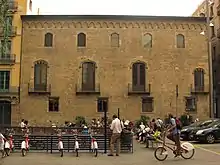
In 1896 together with other Carlist deputies and senators Solferino withdrew from the Cortes;[73] denying allegations that like in 1872, the act was introduction to Carlist insurgency, he nevertheless signed a letter lambasting the turnista system as corrupted and unsustainable.[74] The same year he took part in ambiguous gatherings hailing general Moore[75] and in 1898 he presented Carlos VII with an enigmatic gift.[76] His actual involvement in La Octubrada, a series of minor Catalan Carlist 1900 revolts,[77] is highly unclear.[78] Though scholars do not list him among those involved[79] and at the time of the disturbances he was together with other Carlist leaders in Paris,[80] contemporary press noted that Badalona raid originated from Torre Baró estate of his brother-in-law Sivatte.[81] Security forces searched his Barcelona palace tearing off the floor and allegedly discovered few rifles.[82] Solferino denied any involvement,[83] which did not spare him brief detention in 1901.[84]
Solidaritat Catalana

In the early 20th century Solferino counted among the regional party heavyweights, an example of politician from "inner circle", composed mostly of aristocrats governing the Traditionalist structures.[85] By democratic Barcelona press he was acknowledged as one of "más conspicuos personajas da la reacción".[86] Declaring utter loyalty to the new national leader Matías Barrio,[87] Llanza remained on very good terms with the deposed one, de Cerralbo;[88] by some he was associated with intrigues aiming at enforcing abdication of the claimant in favor of his son, don Jaime.[89] When the Catalan jefe Luis Llauder died in 1902[90] Solferino was one of the candidates for succession, but regional jefatura went to a military veteran, Erasmo de Janer;[91] Solferino had to settle for the provincial Barcelona leadership.[92] At this post he threw himself into re-organizing local press activities: in 1903 he co-founded and presided over publishing house Fomento de la Prensa Tradicionalista;[93] he re-launched Correo Catalan[94] and enforced personal changes in its managing and editorial structures.[95]
As aging Janer was in his mid-70s, Solferino was gradually emerging as the key Carlist politician in Catalonia. Not a rally-type public speaker,[96] he excelled rather in behind-the-stage dealings. In mid-1900s together with his protégé Junyent he emerged as advocate of a broad Catalanist coalition, forged by opposition to the 1906 Ley de Jurisdicciones.[97] Though alliance with different breeds of Republicanism raised many eyebrows and public embrace between Solferino - representative of "blood-thirsty clericalism"[98] - and vehemently anti-clerical Salmerón sent shocking waves across Catalonia,[99] Llanza enjoyed full support of the claimant,[100] also when joining executive junta of Solidaritat Catalana.[101] The strategy paid off with excellent performance at the polls; in the 1907 Cortes elections the Catalan Carlists won 7 mandates compared to the usual 1-2 tickets[102] and in the 1909 provincial campaign they won 7 tickets compared to the usual 4.[103] Moreover, the alliance became sort of a model for Carlists elsewhere, with emulating attempts in Vascongadas,[104] Galicia[105] and Asturias.[106]

According to some scholars the 1907 success elevated Catalan Carlism from "marginal phenomenon restricted to Pyrenean foothills" to an entirely new stature.[107] Solferino himself assumed a new tone when speaking in the Senate; in 1908 the national press reported him as declaring Spain a confederation[108] and confirming that "Cataluña es un Estado y España una Confederación".[109] In return he was accused of having been anti-Spanish.[110] Though in 1909 Solidaritat Catalana fell apart, Solferino and Junyent kept advocating rapprochement with the nationalists.[111] This stance produced differences between Solferino and Janer; as a result, in 1909 the former resigned from the provincial Barcelona jefatura.[112]
Jefe
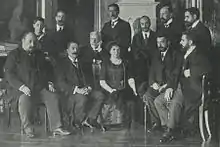
Already in 1908 there were rumors of Solferino replacing Janer,[113] but they turned into fact no earlier than two years later; enjoying good relations with the new claimant don Jaime,[114] in February 1910 the duque was appointed the new jefe of regional Catalan Carlism.[115] Though he was further amicably disposed towards La Lliga, Solferino's tenure is rather marked by his efforts to cope with another new phenomenon. At that time Catalunya muntanyenca, traditional inner-Catalonia of rural hills and valleys, was getting dominated by the maritime belt, the urban area and its newly emergent social strata. One of its features was proletarian radicalism of different political signs, including Carlism.
Around the turn of the decades the center of gravity of Catalan Carlism moved from countryside to Barcelona; between 1907 and 1913 the number of circulos in the city grew from 3 to 11,[116] most of the new ones in peripheral workers districts.[117] Since the 1906 rout of Traditionalist youth at the Arenas bullring, suffered at hands of the Lerrouxist hit-squad,[118] new Carlist proletarian groupings[119] were getting increasingly radical. Though the movement has always been known for its belligerent spirit if not sheer brutality, specifics of the newly emergent Barcelona Requeté organization was its penchant for a new type of urban violence, known as pistolerismo.[120] Already in 1908 Solferino was interrogated by the police in relation to an obscure and unexplained episode known as "caso Rull".[121] After taking office he declared war on youth party radicalism, advocated by the likes of Dalmacio Iglesias,[122] claiming that it compromised Carlist reputation of "the party of order".[123] Following the 1912 Granollers incident, when Requetés fired at Republican crowd resulting in one fatal casualty and many people wounded,[124] Solferino dissolved the nucleus of radicalism, Ateneo Tradicionalista,[125] though the conflict with its activists like Vives Suria continued also later on.[126]
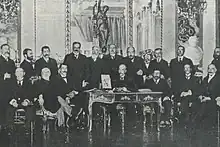
In terms of political vision Solferino pursued a rather flexible strategy, tending to support various Right-wing coalitions where possible. Always rather conciliatory towards the Integrists,[127] in 1910 he endorsed "coalición de elementos de orden"[128] later aiming for alliances with Integros, La Lliga, Conservatives and Comité de Defensa Social.[129] At that time he was already a follower of Vázquez de Mella, most dynamic Carlist politician increasingly at odds with the claimant.[130] When a pro-Mellist de Cerralbo was reinstated as national jefe, in 1912 Solferino was appointed to the newly created national executive, Junta Central Superior,[131] and entered two of its specialized committees.[132] Though don Jaime was increasingly upset with Solferino and his rule in Catalonia,[133] officially he demonstrated accord.[134] It was rather Llanza who was getting tired of conflict, especially as Junta Provincial of Lleida refused to accept a Barcelona-appointed Carlist candidate to the Cortes and situation in the province became increasingly chaotic.[135] Solferino first tried to resign in 1913,[136] but it was not until May 1914 resignation of the entire Junta Regional that Junyent was appointed his successor.[137]
Last years
Decomposition and chaos in Catalan Carlism continued; unable to cope and re-introduce discipline, Junyent and the new Junta Regional resigned and were indeed dismissed in 1916.[138] Solferino was reinstated as regional leader in February 1917,[139] but the crisis kept unfolding. Provincial issues aside, its dominating thread became the conflict between supporters of don Jaime and those siding with Vazquez de Mella. As in 1918 the claimant was released from his home arrest in Austria, early next year he arrived in Paris and issued two manifestos, lambasting those disloyal and announcing forthcoming personal changes. Solferino initially adopted what seemed like a wait-and-see policy, mid-February 1919 issuing a circular which urged order and discipline.[140] However, next month he addressed the new national leader, Pascual Comín, with a resignation note.[141]
Political path of Solferino after 1919 is not entirely clear. Competent scholars claim that he left mainstream Carlism and joined the Mellistas, at that time attempting to institutionalize their group as a separate party.[142] However, despite his prestigious title and high position within Traditionalist structures, the most detailed study on the Mellist breakup does not list him at all.[143] Contemporary press mentioned him first in relation to Traditionalism[144] and later to Acción Popular.[145] To make matters worse, 1923 newspapers reported that Solferino conferred with don Jaime[146] and some went on naming him as "carlista".[147] Perhaps the safest conclusion is the one suggested by his obituaries, namely that in the last years of his life Solferino simply distanced himself from politics.[148] Indeed, he is not reported as engaged in any primoderiverista institutions.
As the first taxpayer of the Huesca province[149] and one of the wealthiest Barcelona residents Solferino was involved in numerous economic activities, especially those related to agriculture: from taking part in fairs and competitions[150] to animating mutual insurance associations,[151] landholders' organizations,[152] lobbying[153] and drafting banking real estate credit regulations;[154] he was member of Instituto Agrícola Catalán de San Isidro. At one point he was heavily engaged in an attempt to launch an engineering high school in Barcelona; his "Politécnico de Barcelona" company donated part of the Torre Baró estate to host the facilities,[155] but Escuela de ingenieros electricistas idea[156] has ultimately failed to take shape.[157] He revealed particular interest in the energy sector also later on, co-managing Exposición Internacional de Industrias Eléctricas.[158]
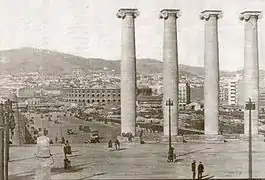
For decades Solferino has been engaged in different projects aiming at facilitating transport of agricultural products from Aragon to Catalan ports, like technological upgrade of Canal de Aragón y Cataluña[159] or works on enhancement of Barcelona maritime transport infrastructure.[160] In the last Restauración years he co-launched the idea of building a railway line connecting the Aragon Pyrenees and the Ebro mouth, advancing it in the senate.[161] A little known fact is that he campaigned against duels, remaining an activist of Liga Antiduelista.[162] Until the end of his life he was engaged in Catholic groupings, especially Conferencias de San Vicente de Paúl and Pía Unión de San Miguel Arcángel.[163] Suffering from overweight-related health problems,[164] he died of a pulmonary embolism.[165]
See also
Footnotes
- artistocratic titles in sequence quoted after Diputacion Permanente y Consejo de la Grandeza de Espana y Titulos del Reino service, available here
- La Hormiga de Oro 21.07.27, available here
- Cesar Alcalá, Intervención de soldados catalanes en el Saqueo de Roma, [in:] Arbil 85, available here
- Francesc Llança de Sant Julià d’Alfou married Maria-Anna Eroles,descendant to a family holding the estate since the 13th century, Can Maians entry, [in:] Museu Arxiu de Vilassar de Dalt service, available here
- his biography in Iltre. Sr. D. Rafael de Llanza y de Valls, Mataró 1892
- he rose to the rank of tinent coronel, David Galí, Raquel Lacuesta, Marta Piera, El Palau dels Comtes i la formació de la vila de Centelles, Centelles 2014, p. 55
- Roberto de Llanza, El ‘Itinerario’ de don Rafael de Llanza, [in:] Boletín de la Real Academia de Buenas Letras de Barcelona 26 (1955-1956), pp. 235-282, available here
- Rafael de Llanza y de Valls, Un español en el ejercito de Napoleon, Madrid 2008, ISBN 9788496170858
- some sources claim he died in 1867, Casimir Martí, L'orientació de Pi i Margall cap el socialisme i la democrácia. La correspondencia entre Pi i Margall i el duc de Solferino (1846-1865), [in:] Recerques: Història, economia i cultura, 3 (1974), p. 156
- and reached the rank of commandante, Galí, Lacuesta, Piera 2014, p. 55
- Catáleg del fons Benet de Llanza i Esquivel, Barcelona 2007, p. 3, available here. According to the same source he served as a senator, but the official Senate website does not confirm this, compare here
- he wrote two dramas: Centellas y Moncada and Adriana Borgia, Martí 1974, p. 156
- Galí, Lacuesta, Piera 2014, p. 55
- see María de la Concepción Pignatelli Belloni y Moncayo, IX Duquesa de Solferino entry at Geni genealogical service, available here
- her great-grandfather (and Manuel's great-great-grandfather), Giovanni Anastasio Pignatelli, was the first of the family who settled in Spain, Valentina Fernández Vargas, Memoria de mujeres en el callejero de Madrid, Madrid 2004, p. 141, available here
- he broke with Pi y Margall after the latter declared himself a socialist, Martí 1974, p. 157
- Martí 1974, p. 159
- Santiago Broto Aparicio, La noble casa aragonese de los Condes de Fuente, [in:] Diario del Elto Aragón 11.01.04, available here
- Faustino Menendez Pidal de Navascues (ed.), Anales de la Real Academia Matritense de Heráldica y Genealogía, vol. 10, Madrid 2007, ISSN 1133-1240, p. 281, La Hormiga de Oro 21.07.27, available here
- César Alcalá, Fotografía familiar, [in:] Tradición Viva service 2010, available here, engaged in party propaganda since 1868, B. de Artagan [Reynaldo Brea], Politicos del carlismo, Barcelona 1913, p. 110; he was deputy to the Cortes in 1872, see the official Cortes service available here. In 1872, shortly before outbreak of the Third Carlist War, he was deputy president of Barcelona Junta Provincial Católico-Monárquica, La Regeneracion 02.03.72, available here
- Galí, Lacuesta, Piera 2014, p. 58
- Alcalá 2010, Artagan 1913, p. 108; he did not practice as lawyer and hired professionals when involved in juridical disputes, e.g. when contending the title of duque de Monteleon, see El Globo 08.06.00, available here
- Anales de la Real Academia... 2007, p. 281 gives the wrong date of 1908; for correct information see Hormiga de Oro 22.11.98, available here
- César Alcalá, D. Mauricio de Sivatte. Una biografía política (1901-1980), Barcelona 2001, ISBN 8493109797, p. 10-11
- see the official Cortes service, available here
- for details see Armand de Fluvia i Escorsa, Itziar Gonzalez Virós, Pere Vivas, El Pallau Centelles, Barcelona 2002, ISBN 8439359357, available here
- Anales de la Real Academia... 2007, pp. 281-2
- in the early 20th century Luis was president of the Barcelona Circulo Obrero Tradicionalista, later on becoming member of Junta Provincial; he also served as president of Juventud Tradicionalista of Barcelona; Francisco was active in Circulo Obrero Tradicionalista of Horta, Artagan 1913, p. 111
- they are not mentioned a single time in Robert Vallverdú i Martí, El Carlisme Català Durant La Segona República Espanyola 1931-1936, Barcelona 2008, ISBN 9788478260805
- it is estimated that some 170 members of Spanish aristocracy (i.e. some 12% of the total) supported Carlos VII, Julio V. Brioso y Mayral, La nobleza titulada española y su adhesión a Carlos VII, [in:] Aportes 1 (1986), pp. 13-27
- the 1872 letter from the claimant to the Pope, giving reasons for going to war and presenting the Carlist cause, listed Solferino among the Spanish nobles adhering; with the same purpose he was mentioned in post-war propaganda booklets, compare Agustín Fernández Escudero, El marqués de Cerralbo (1845-1922): biografía politica [PhD thesis], Madrid 2012, pp. 26, 42
- Fernández Escudero 2012, p. 51-53; some authors claim that the pilgrimage was already an attempt to launch an all-Catholic ultraconservative party, Javier Real Cuesta, El Carlismo Vasco 1876-1900, Madrid 1985, ISBN 8432305103, pp. 112-12
- La Epoca 27.10.78, available here
- La Epoca 21.10.78, available here
- La Epoca 15.01.82, available here
- most likely due to lukewarm approach of Leo XIII, unwilling to get trapped in Spanish politics, see Fernández Escudero 2012, pp. 52, 56
- La Unión 03.06.83, available here or El Siglo Futuro 12.03.85, available here
- La Unión 07.04.86, available here
- El Siglo Futuro 31.05.87, available here
- La Dinastía 14.01.87, available here
- El Siglo Futuro 20.01.77, available here. For overview of the organisation, see Chiaki Watanabe, La Juventud Católica Española. Orígenes y primer desarrollo, [in:] Espacio, Tiempo y Forma 8 (1995), pp. 133-134
- La Epoca 17.01.87, available here
- La Dinastía 16.10.88, available here
- like erecting monument to bishop José María Benito Serra in 1887, see El Siglo Futuro 27.01.87, available here
- El Siglo Futuro 19.02.83, available here
- El Siglo Futuro 12.03.88, available here
- La Dinastía 07.06.87, available here
- El Siglo Futuro 26.06.85, available here; also Nocedal used to send venerating notes to Solferino, see El Siglo Futuro 07.02.87, available here
- El Siglo Futuro 09.02.87, available here
- La Unión 07.04.06, available here; as late as 1893 he was still referred to as die-hard Integrist, El Heraldo de Madrid 27.02.87, available here
- El Siglo Futuro 24.07.86, available here
- El Siglo Futuro 02.01.85, available here
- El Siglo Futuro 25.01.89, available here
- Fernández Escudero 2012, p. 146, Real Cuesta 1985, p. 134
- El Siglo Futuro 02.02.89, available here
- Solferino possessed lands mostly in Almuniente and Albalate de Cinca - where he held a palacio, though also in Argavieso, Alcala del Obispo, Estiche, Huerto and Peraltilla, see the official senate service, available here, together more than 600 ha, see Carrasquer Launed, Félix entry, [in:] Gran Enciclopedia Aragonesa online, available here Archived 2015-11-19 at the Wayback Machine. In 1930 the Albalate de Cince estate was among the first ones in the country to be turned into collective farming estate, see Assumpta Castillo Cañiz, Volvían con un poco más de luz en los ojos. Entre Aragón y Catalunya. Migraciones y militancia, [in:] José Manuel Aldea Celada, Carmen López San Segundo, Paula Ortega Martínez, Mª de los Reyes de Soto García, Francisco José Vicente Santos (eds.), Los lugares de la historia, Salamanca 2013, ISBN 9788461657551, p. 1263; see also Mundo Grafíco 12.08.31, available here
- Jordi Canal i Morell, El carlisme catala dins l'Espanya de la restauracio: un assaig de modernització politica (1888-1900), Barcelona 1998, ISBN 9788476022436, p. 78. At the time there was no clear leader of the Aragon Carlism. Another high aristocrat resident in the region, Bernardo Elío y Elío, marques de Las Hormazas, was too young to pose a challenge to Solferino. The regional Catalan leader was Llauder, La Epoca 02.02.89, available here
- Fernández Escudero 2012, p. 146; according to some sources he represented not only Aragon but also Valencia, El Dia 09.02.89, available here
- Fernández Escudero 2012, p. 173
- compare Barcelona Comica 07.11.89, available here
- Agustín Fernández Escudero, El XVII Marqués de Cerralbo (1845–1922). Iglesia y carlismo, distintas formas de ver el XIII Centenario de la Unidad Católica, [in:] Studium: Revista de humanidades, 18 (2012) ISSN 1137-8417, p. 131
- La Correspondencia de España 01.08.90, available here
- Fernández Escudero 2012, p. 237-8
- to Castelar, La Epoca 23.01.91, available here
- compare La Dinastía 29.05.91, available here, also Fernández Escudero 2012, p. 238
- Jordi Canal i Morell, Banderas blancas, boinas rojas: una historia política del carlismo, 1876-1939, Madrid 2006, ISBN 9788496467347, p. 172
- "la fuerza de este en aquel distrito es grandisima", see El Liberal 04.02.93, available here
- Canal 1998, p. 126
- the number of Carlist senators differed, e.g. in the next term commencing 1896 apart from Cerralbo and Solferino there were two more elected (LLauder and Olazabal), Fernández Escudero 2012, p. 254. Both did not swear loyalty to Alfonso XII and have not participated in Senate works
- the process was not painless, as there were Carlist provincial leaders, like Salvador Soliva, who in 1896-8 opposed Solferino; they grumbled at the well-off dominating in the Barcelona party structures, inactivity and jefes having been appointed rather than elected, Canal 1998, pp. 109-110
- La Epoca 20.01.96, available here, for 1897 see El Día 08.11.97, available here
- like the 1894 workers' pilgrimage to Rome, La Unión Católica 22.02.94, available here
- Fernández Escudero 2012, pp. 320-322
- El Imparcial 08.09.96, available here
- El Correo Militar 01.05.96, available here
- a telescope from the Third Carlist War, El Correo Militar 23.08.97, available here
- mostly in Badalona, though also in Casteldefells, Santa Coloma de Gramanet, Igualada, Sardañola, Alcoy, Berga, Calella, Mantesa y Moncada, Fernández Escudero 2012, p. 387
- the episode is one of the most enigmatic ones in Carlist history. It is not clear what the objectives of the claimant were, which major politicians were involved, how the conspiracy developed, who were its leaders, what plan (if any) they had and so on. There were most extravagant theories circulating, e.g. that disturbances were provoked to cause Madrid stock exchange perturbations, see Fernández Escudero 2012, pp. 391-6
- like Tamarit, Fernández Escudero 2012, pp. 383-4. Most detailed accounts in Eduardo González Calleja, Jordi Canal, No era la ocasión propicia..... La conspiración carlista de fin de siglo en un memorial a don Carlos, [in:] Hispania 181 (1992), pp. 705-742, Jordi Canal, Republicanos y carlistas contra el Estado. Violencia política en la España finiseculan, [in:] Ayer 13 (1994), pp. 57-84
- Fernández Escudero 2012, pp. 381-2, 390, 394. Some scholars claim Solferino was unaware of the forthcoming coup, Eduardo González Calleja, La razón de la fuerza: orden público, subversión y violencia política en la España de la Restauración (1875–1917), Madrid 1998, ISBN, 9788400077785, p. 213
- La Epcoa 31.10.00, available here. Another thread followed was that head of the Barcelona police, Miró, allegedly a frequent guest at Solferino's residence, remained mysteriously inactive during the Badalona events, El Correo Militar 09.11.00, available here
- "tres carabinas, dos fusiles y cuatro bayonetas", La Epoca 10.11.00, available here, El Imparcial 10.11.00, available here
- El Día 10.01.01, available here
- La Epoca 25.09.01, available here; Solferino remained under security surveillance, see El Liberal 29.09.01, available here
- Eduardo González Calleja, Historiografía reciente sobre el carlismo: el retorno de la argumentación política?, [in:] Ayer 38 (2000), p. 281
- El Día 09.02.04, available here
- Fernández Escudero 2012, p. 412
- La Correspondencia Militar 16.06.02, available here. Some authors consider Solferino, along the party leader de Cerralbo, chief promoter of a new format of Carlism, dubbed "carlismo nuevo", Isidre Molas, Els senadors carlins de Catalunya (1901-1923), Barcelona 2009, p. 8
- Fernández Escudero 2012, p. 400
- Jordi Canal, ¿En busca del precedente perdido? Tríptico sobre las complejas relaciones entre carlismo y catalanismo a finales del siglo XIX, [in:] Enric Ucelay Da Cal (ed.), El nacionalismo catalán: mitos y lugares de memoria, Barcelona 2005, ISBN 9788497425070, p. 46
- La Vanguardia 06.11.05, available here, also El Norte 17.03.11, available here
- El Liberal 29.09.01, available here
- Molas 2009, p. 20, Alcalá 2001, p. 10, Canal 1998, p. 145
- following La Octubrada it was re-named to El Fenix; Solferino re-launched it, though the original title Correo Catalan was changed to El Correo Catalan
- Morales was moved from director to redactor jefe, while Junyent was made new director, Canal 2006, p. 189; Solferino had already some experience with the press; in 1895-97 he was owner of El Nuevo Cruzado, a weekly issued by the Barcelona Juventud organization, Canal 1998, p. 148
- he was seldom reported by the press as speaking at public gatherings, though at times he did appear, see La Epoca 23.04.03, available here
- Molas 2009, p. 5
- El Pais 21.01.07, available here
- compare El Día 22.05.06, available here; the alliance became even a point of reference even in various jokes, see Madrid Cientifico 525 (1906), available here
- Fernández Escudero 2012, p. 418
- the junta was formed by Miquel Junyent, Solferino, Francesc Cambó, Pere Rahola, J. Roca i Roca, Amadeu Hurtado, J. M. Vallès i Ribot and Joaquim Lluhí Rissech, Molas 2009, pp. 20-21
- during Restoration the Catalan Carlists used to win 1-2 mandates in each election campaign
- in 1909 campaign the Carlists hit their all-time high electing 7 deputies to 4 provincial Catalan governing bodies; in the 1900–23 period the Carlists were electing on average 4 deputies, complete list in Molas 2009, pp. 22-23
- in the Vascongadas the Carlists attempted a number of alliances based on regional identity, from the one with Fueristas in the 1880s to Alianza Foral in the 1920s, let alone the Catholic-Fuerista alliance of 1931
- named "Solidaridad Gallega", see Miguel Cabo Villaverde, Solidaridad Gallega y el desafío al sistema de la restauración, 1907-1911, [in:] Ayer 64 (2005), pp. 238-242
- named "Frente Asturiano", see Carolyn P. Boyd, Covadonga y el regionalismo asturiano, [in:] Ayer 64 (2006), p. 167
- Colin M. Winston, Workers and the Right in Spain, 1900-1936, Princeton 2014, ISBN 9781400858095, pp. 69-70; the same author but in another work claims that following 1907 elections in Catalonia, Carlism "became politically dependent on La Lliga", Colin. M. Winston, Carlist workers groups in Catalonia, 1900-1923, [in:] Stanley G. Payne (ed.), Identidad y nacionalismo en la España contemporánea: el carlismo, 1833-1975, Madrid 2001, ISBN 8487863469, p. 86
- though he did not go as far as Sol y Ortega, who named Spain "conjunto de naciones", La Epoca 20.02.08, available here
- El Globo 22.02.08, available here
- La Epoca 21.02.08, available here
- Fernández Escudero 2012, p. 459
- El Siglo Futuro 01.12.09, available here
- El Día 13.03.03, available here
- El Imparcial 29.01.07, available here
- according to some press titles Solferino's elevation was triumph of the new over the old politicians, see La Correspondencia de España 12.02.10, available here. However, the others ridiculed him as typical example of political corruption, Xavier Tomafoch, Política, eleccions i caciquisme a Vic [PhD thesis Universitat Autonoma de Barcelona], Barcelona 2003, p. 314
- since the early 1890 Solferino was actively supporting Carlist structural buildup, working that "there is no village in Spain without a Carlist junta or circulo", quoted after Canal 1998, p. 94
- Winston 2014, p. 71
- Winston 2014, p. 70
- like "Ateneo Obrero Legitimista", "El Porvenir" and "Crit de Patria" Carlist worker clubs, Winston 2014, pp. 69-70, 75-6
- the young Carlist breed of militants "crossed the line between accepting violence as a necessary tool and exulting in its positive and regenerative qualities", Winston 2014, p. 84
- a certain Rull was a police undercover operative penetrating the Barcelona proletarian conspiracy world; he was suspected of having been a double-agent. However, explosives he was associated with were planted in obscure and unfrequented passages apparently with little harm intended, which led some to suspect he was on service of an unidentified extreme party aiming at bringing police forces into disrepute, compare El Pais 09.04.08, available here, Eduardo González Calleja, La razón de la fuerza: orden público, subversión y violencia política en la España de la Restauración (1875–1917), Madrid 1998, ISBN 9788400077785, p. 401
- Calleja 1998, p. 494, Jordi Canal, El carlismo, Madrid 2000, ISBN 8420639478, p. 269, Eduardo González Calleja, Paramilitarització i violencia politica a l'Espanya del primer terc de segle: el requeté tradicionalista (1900-1936), [in:] Revista de Girona 37 (1991), p. 70
- Winston 2014, p. 85, Winston 2001, p. 90. In 1911 Solferino himself faced legal action for an article he published in El Correo Catalan, allegedly assaulting a civil governor , Heraldo Militar 12.09.11, available here; the case was eventually dropped, see La Epoca 03.03.12, available here
- Winston 2014, p. 84
- La Epoca 12.04.12, available here
- El Pais 08.06.13, available here
- e.g. appearing jointly with the Integrists on gatherings against secular schools, La Epoca 20.03.10, available here
- La Correspondencia de España 02.05.10, available here
- La Correspondencia de España 10.11.13, available here, Molas 2009, p. 9
- already in 1907 the two were reported as friends, with Solferino driving de Mella across Barcelona in his car, El Pais 21.01.07, available here
- Fernández Escudero 2012, p. 443
- namely the electoral and organization ones, Fernández Escudero 2012, p. 459
- in 1912 he noted that "muy mal van con Solferino en Cataluña", Juan Ramón de Andrés Martín, El caso Feliú y el dominio de Mella en el partido carlista en el período 1909–1912, [in:] Historia contemporánea 10 (1997), p. 104
- in April 1913, when in Lourdes on great propaganda meeting, Solferino was sitting right next to don Jaime, Fernández Escudero 2012, p. 465
- Antoni de Nuix, head of Lleida's Carlism, was supported by the local Carlist daily El Correo de Lérida and most of the junta, while local Juventud Jaimista and its periodical remained loyal to Solferino. Takeovers of both reviews followed with situation turning into total chaos, see Conxita Mir, Lleida (1890-1936): caciquisme polític i lluita electoral, Barcelona 1985, ISBN 9788472027169, pp. 308-310
- La Correspondencia de España 15.11.13, available here, Fernández Escudero 2012, p. 458
- La Epoca 11.05.14, available here; Melgar advised that as "en Cataluña dentro el partido reinaba el desconcierto" the resignation be accepted by the claimant, Fernández Escudero 2012, p. 455
- Fernández Escudero 2012, p. 456
- with Miquel Salellas Ferrer as deputy, Molas 2009, p. 9
- El Sol 19.02.19, available here
- La Correspondencia de España 12.03.19, available here, also Heraldo de Madrid 12.03.19, available here
- Fernández Escudero 2012, p. 514, José Luis Orella Martínez, El origen del primer catolicismo social español, [PhD thesis] Madrid 2012, p. 182
- Juan Ramón de Andrés Martín, El cisma mellista. Historia de una ambición política, Madrid 2000, ISBN 9788487863820
- at that time the term was applied usually the Mellistas, see La Hormiga de Oro 01.01.19, available here
- La Hormiga de Oro 10.04.20, available here
- Heraldo de Madrid 05.07.23, available here
- La Libertad 13.05.23, available here
- La Hormiga de Oro 21.07.27, available here
- La Epoca 17.06.16, available here
- for wine see La Dinastía 01.01.88, available here, for cereals see La Dinastía 05.12.88, available here
- like "La Mútua Agrícola", see La Dinastía 22.10.93, available here
- he was president of Cámara Oficial de La Propiedad, El Financiero 26.12.13, available here
- La Correspondencia de España 11.03.95, available here
- Revista Política y Parlamentaria 30.01.01, available here
- La Dinastía 08.05.02, available here
- La Dinastía 21.04.04, available here
- for details of this failed enterprise see Mercé Tatjer, Enginyers industrials més de la fábrica (1860-1939) [paper delivered at IX Jornades d’Arqueologia Industrial de Catalunya conference, Barcelona 2013], p.5, available here
- La Energia Electrica 25.12.13, available here
- La Epoca 20.10.02, available here
- Vida Marítima 30.05.09, available here
- see the official Senate service, available here
- La Epoca 27.06.05, available here; he shared this passion with the future Carlist king, don Alfonso Carlos
- La Hormiga de Oro 21.07.27, available here
- already in 1913 he was ridiculed for his overweight: "bastón más grueso que el abdomen del duque de Solferino", La Unión Ilustrada 13.07.13, available here; his late senate record is full of absence notes
- ABC 19.07.27, available here
Further reading
- Jordi Canal i Morell, Carlisme i catalanisme a la fi del segle XIX. Notes sobre unes relacions complexes, [in:] Le discours sur la nation en Catalogne aux XIXe et XXe siècles. Hommage à Antoni M. Badia i Margarit, Paris 1995, pp. 211–230
- Jordi Canal i Morell, ¿En busca del precedente perdido? Tríptico sobre las complejas relaciones entre carlismo y catalanismo a fines del siglo XIX, [in:] Historia y Politica 14 (2005), p. 45-84
- Jordi Canal i Morell, El carlisme catalá dins l'Espanya de la Restauracio,1875-1900: Un assaig de medernitzacio polftica (1888-1900), [in:] Bulletin d'histoire contemporaine de l'Espagne 27 (1998), pp. 245–251
- Jordi Canal i Morell, El carlisme catala dins l'Espanya de la restauracio: un assaig de modernització politica (1888-1900), Barcelona 1998, ISBN 978-8476022436
- Agustín Fernández Escudero, El marqués de Cerralbo (1845-1922): biografía politica [PhD thesis], Madrid 2012
- Isidre Molas, Els senadors carlins de Catalunya (1901-1923), Barcelona 2009
- Maria Gemma Rubí i Casals, Francesc Espinet, Solidaritat catalana i Espanya (1905-1909), Barcelona 2009, ISBN 9788492437153
- Xavier Tornafoch, Política, eleccions i caciquisme a Vic [PhD thesis Universitat Autonoma de Barcelona], Barcelona 2003,
- Colin M. Winston, Workers and the Right in Spain, 1900-1936, Princeton 2014, ISBN 9781400858095
External links
- Llanza, Sivatte and Bobadilla families by Alcala
- Solferino's grandfather in Russia - picture by Ferrer Dalmau
- Solferino's residence in Barcelona discussed in detail
- Solferino at official Congreso de Diputados site
- Solidaritat Catalana and Carlism by Alcala
- Solferino at official Senate site
- Solferino's obituary
- Solferino palace, Albalate de Cinca
- Solferino palace, Barcelona
- fate of Solferino's Huesca estate discussed in detail
- Por Dios y por España; contemporary Carlist propaganda on YouTube
